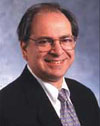Issue Archive
Editor’s Wrapup: There’s More to the Story
 Even the most ardent Zionist routinely criticizes the Israeli government’s public-relations efforts. Tales of diplomats assigned on the basis of political connections rather than debating skills, or of ambassadors who don’t speak the language of the country they are sent to, are among the stories swapped by people who wonder when Israel will get its act together.
Even the most ardent Zionist routinely criticizes the Israeli government’s public-relations efforts. Tales of diplomats assigned on the basis of political connections rather than debating skills, or of ambassadors who don’t speak the language of the country they are sent to, are among the stories swapped by people who wonder when Israel will get its act together.
Some critics have decided that hasbara—the Hebrew term for “explanation” that stands for the nation’s effort to make its case to the world—is too important to be left to politicians. Charlotte Hallé reports on one program, Israel at Heart, founded by an American Jewish philanthropist who sends young Israelis to lecture abroad. The program is part of a trend that includes other private hasbarainitiatives and, most recently, an Israeli television reality show.
When we talk of Israel’s image on campus, we tend to picture beleaguered Jewish students in an overwhelmingly pro-Palestinian atmosphere. Anti-Israel activity on campus is a real concern, but Samuel G. Freedman writes about a parallel phonomenon that has largely escaped notice. At the City College of New York, he points out, 95 percent of the students taking a major or minor in Jewish studies are not Jewish. Similar figures have been noted at other colleges. Freedman calls it part of a penumbra effect—“the expanding aura of Jewish influence on American culture at large.”
One of Hadassah’s greatest strengths is its ability to tolerate cognitive dissonance. Though the Middle East seems to have entered a new, more tranquil phase, during the intifada the world screamed that reconciliation between Israelis and Palestinians was impossible. All the while, in our schools and hospitals in Jerusalem we saw a different universe, one of constant interaction between neighbors. Wendy Elliman’s medical column provides an example that tells another side of the story.










 Facebook
Facebook Instagram
Instagram Twitter
Twitter
Leave a Reply